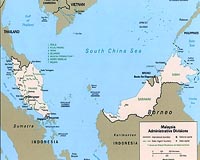 |
Bonn, Germany (SPX) Dec 06, 2010 The German Federal Government adopted a new space strategy at its cabinet meeting on 30 November 2010. The paper defines the fundamentals of how the high-technology space sector is to develop over the next few years at a national level and in so doing, how it must respond to changing political and societal conditions on the domestic as well as international stages. This strategy is being introduced by the German Federal Ministry of Economics and Technology (Bundesministerium fur Wirtschaft und Technologie; BMWi). The strategy paper was drafted jointly with the other federal ministries involved in space activities, and in consultation with scientific and business establishments such as the German Aerospace Center (Deutsches Zentrum fur Luft- und Raumfahrt; DLR). "Germany's challenge lies in the competition for the best ideas and the best technologies. The advancement of science and technology has to be a core element of our society. It is this need that drives Germany's new space strategy," explained Johann-Dietrich Worner, Chairman of the DLR Executive Board. "This strategy maps out a path for the future development of the space sector in Germany; one in which DLR, in its capacity as Germany's national space agency and major research centre, has been able to play a significant defining and determining role," he added.
The way forward This includes the strategic expansion of national space expertise, to maintain a strong position for German technology in the competitive international marketplace. One example of this is the continued development of radar technology, following on from the successful TanDEM-X mission with the TanDEM-L mission - which has already generated a high level of international interest. With the creation of a uniform legal framework and the drafting of a German space law, the plan needed for the next few years has been laid out. Its aim is to ensure that, at the European level, appropriate directives exist to afford the same competitive opportunities to all the countries involved in space activities, thereby creating a strong platform for a future 'division of labour' in the European space sector. This is also relevant for positioning Germany to be able to perform research in space, equipping it with 'systems capability' - that is, the ability to develop, build and operate spacecraft - as well as the opening up of new markets. It is also about finding uses for space expertise in the contexts of civilian and military security. To accomplish this, a balance needs to be maintained between the scientific- and application-based, or practical, uses of space. All this depends on maintaining Germany's technological independence and having unrestricted access to space transportation systems - and through them, to space.
Share This Article With Planet Earth
Related Links German Aerospace Center (DLR) The latest information about the Commercial Satellite Industry
 Malaysia To Train Experts For Aerospace Industry
Malaysia To Train Experts For Aerospace IndustryKuala Lumpur, Malaysia (XNA) Dec 06, 2010 Malaysia will set up an institute next year to train people in the area of component manufacturing for the aerospace industry. Malaysian Science, Technology and Innovation Minister Maximus Ongkili told reporters here on Wednesday that the new institute, to be named the Aerostructure Manufacturing Innovation Center ( AMIC), will be the research and development center for three areas. ... read more |
|
| The content herein, unless otherwise known to be public domain, are Copyright 1995-2010 - SpaceDaily. AFP and UPI Wire Stories are copyright Agence France-Presse and United Press International. ESA Portal Reports are copyright European Space Agency. All NASA sourced material is public domain. Additional copyrights may apply in whole or part to other bona fide parties. Advertising does not imply endorsement,agreement or approval of any opinions, statements or information provided by SpaceDaily on any Web page published or hosted by SpaceDaily. Privacy Statement |